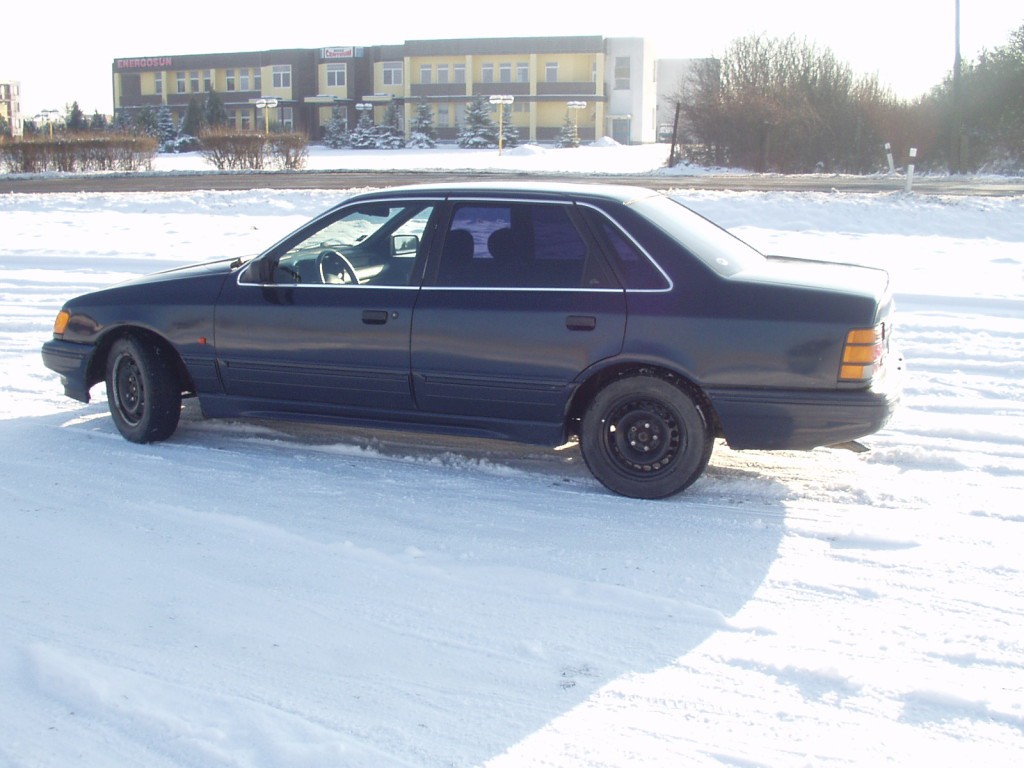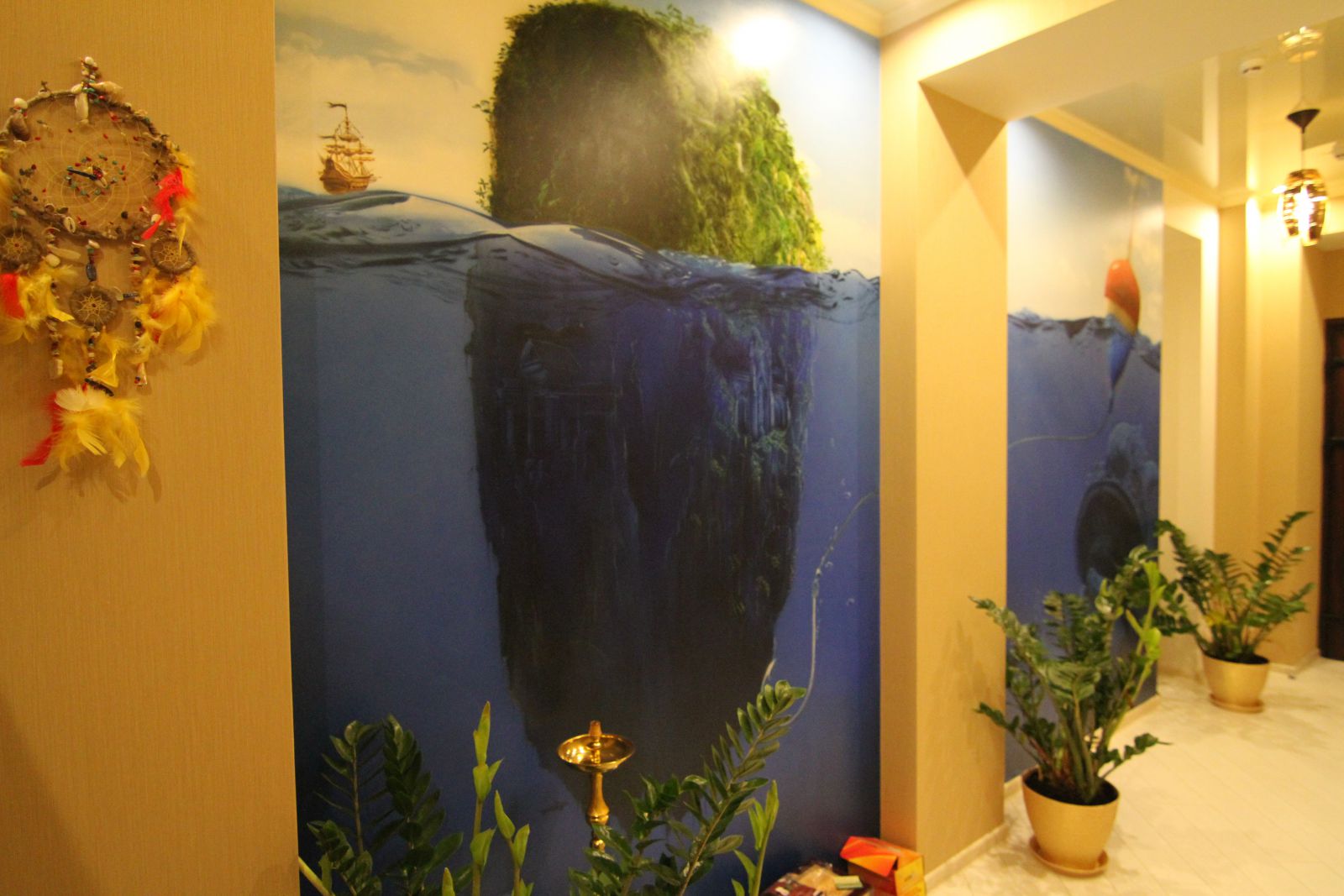How to paint a car? If you need any advice then you should read this tutorial by my brother Alex. This “How to” has been posted on some blogs already (for example: Slavka Kerdova website) but it was in Slovak language. My intention was to share this guide with readers of airbrushdoc.com, so I translated it and gave it some more description.
Ones I’ve decided to renew the look of my old car and finish it with some airbrush painting. After I started to prepare everything I wanted to share the process, step by step with other people. So I captured it all and started to write this article. When car got painted, I started to prepare the airbrush design for it. Unfortunately something happened and I could not finish it. What exactly went wrong I revile at the end. This tutorial has waited a long time to be posted and I didn’t want to wait any longer. I think that this guide for painting a car can be useful for many airbrushists who do automotive airbrush, especially the airbrush beginners.
In this guide I’m painting Ford Scorpio 2.0I Ghia. The car is a bit old (1990) and has been driven more than half a million kilometers. It has been crashed in the front some time ago but then it was fixed. Just before I was going to do the painting it got hit (easily) from behind, so there is a crack on rear bumper. Despite all these facts it was more like experimental project as it was my own car and I got it cheap. Even thought, the car has mark GHIA (Who doesn’t know German Ford with Ghia is high-class car – it has all the features as electric windows and mirrors, air-conditioner, etc. At least it was “high-class” in 1990). For me it was kind of comfort provided inside the car, so I wanted to make it special from the outside.
The finish coat was in very bad condition. Dark blue color looked almost like it was black (that’s nice) but because of the Sun, roof, boot and engine hood became gray over time and it looked almost as it was sanded.
Dents all over the car body. Rear fender bead are practically gone, rust destroyed them (weakness of these cars).
Just to point out: the thing was more like learning and experimental process run on very tight budget as I have invested most of my money into underbody. This is actually my first car I’ve ever painted, so I wanted a good finish for very small money.
Process of painting the car.
- Preparation
- Before painting
- Painting
- After painting
Preparation
- Find out the amount and cost of paint and clear coat
- Get all the equipment and materials (grinder, air compressor, spray gun, sand-paper, masking tape, foil …)
- Find the proper premises (for the job)
A huge help for me was that there was a car welder in the premises where I was renting a garage (Laci, your advises are priceless).
I estimated the amount of paint to 2L and the same amount of clear coat, plus recommended amount of thinner and hardener.
Now when I visited the closest store of automobile colors (in Slovakia) I almost lost all the motivation to do anything. I live very close to Ukraine border, so I decided to try it there. 2 Liters of dark blue enamel (Mobihel) + 1L of thinner + 2L of clear coat + 1L of thinner and half a liter of hardener cost me all together €90. I could buy 1L of urethane color at home for this money, so that’s great saving. Anyway I needed primer coat as well (about 2L) + one can of black spray. 1L of primer coat is about €8.5.
Another materials needed: Sand paper with #80, #120, #240, #800 grit or even higher if you want better finish. Some fiberglass to fix the bumper, paper masking tape, covering foil and old newspapers. Body Filler to fix all the dents. All the spraying tools I had at home so no worries there.
There was no special plan what has to be done step by step, most of the time there was a good friend helping me out and we’ve planned what to do next during the smoke breaks.
Before The Painting
All that’s left of rear fender bead was cut off and my friend (welder Laci) has made new fenders out of metal plate. I could buy new ones, but I tried to save everywhere I could. The car has been stripped of all the plastic details, bumpers, door handles, locks …
With masking tape we covered all the parts that could not be taken off and are not supposed to be sanded or painted. This is very important step and if you are afraid that one layer of tape is not enough, give it two layers.
Then we started fixing all the dents and mistakes that this car collected during its life.
The Body Filler we used came with aluminum addition, it sticks very well to the body and when it dries out it’s hard as rock and it’s very good for sanding.
First sand paper we used to grind dried body filler is #80 next #120. Then we sanded the whole body with #120 and after #240. The parts with rust #80 – #120 – #240. Then body filler again to fill any gaps that were made during previous sanding. Wait till it dries and sand again.
The whole process of roughly sanding took about 4 evenings. While waiting for body filler to dry out I fixed the bumper with fiberglass (I bought a fiberglass fixing kit in paint shop for €7).
The bumper was cracked through the length, so I sanded it around the crack and made some chases with grinder to make better connection of fiberglass and plastic bumper. When fiberglass dried I put some Body Filler on it and after all I sanded it exactly the same way as I did the car body. Fiberglass has been used for inside of the bumper too just to make it more firm.
Then we started the process of detailed body filling. It means that we fill, sand, find more to fill and sand again, fill and sand until the body is spotless. Before you even use body filler, the body has to be almost dent free so the layer of filler will be as thin as possible. If you use more body filler to hide deeper dent it will crack one day or fall off (check the instructions on the body filler can – it has to be around 2 to 5 mm).
Now this car is ready for primer coat. Make sure you masked everything you don’t want to paint. The car is actually sanded only to #240 grit. Wash it to get rid of any dirt and dust. Then make it oil-free using benzine or painting prep solvent (can buy in any paint shop very cheap).
Painting The Car
On the picture above you can still see the mist after primer coat. After the mist is gone, we have to check the body for other mistakes we may have forgotten or missed. As you can see on the picture below we found some. How to proceed then? This is where we use black spray can. It is called a checkout spray. We use black because it’s best for check after sanding. Then the process is the same as before: sanding – filling – sanding – primer coat.

After this we start wet-sanding using sand-paper #800 until black color is gone and the surface is glossy (especially important for enamel). Don’t be afraid to sand it to the original coat, it’s better than leave any pits. When you fix all the mistakes, wet-sand the whole body with sand-paper #800.
Masking is gone because of water, so we have to mask it again. After complete masking, the car and plastic bumper are ready for enamel.
When we prepared the car for enamel we decided to move it to my friend’s garage (proper ventilation – less dust – very important). When spraying hold the spray gun 15 – 25cm from surface and spray it in smooth level strokes. Overlap strokes by 50%. Snaps below were made with my phone right after we sprayed the car, so the quality of these snaps is not the best.
The pause between enamel coat and clear coat is really short. Enamel is glossy right after spraying. But it gets matt after a while when it dries out (in my case I barely cleaned my spray gun after enamel coating – anyway it should be no more than 90 minutes). Then you can start applying clear coat.
When you have diluted the clear coat, do not wait as hardener does its role. I did two heavy layers of clear coat, but you can make more. If you do light layers make more than 4. Give it about 15 minutes before applying next layer.
I finished at about 11pm and I was very tired so I left everything as it is and went home to get some sleep. Next day I started with cleaning. Take all the masking off and mount all the parts back (be very careful not to scratch anything). It’s good to mark unmounted parts. I didn’t and I had some troubles to find where they belong. Do not make the same mistake. Here is the final product (wheels are different as I had to change them for set with winter tires).
I wanted to write something about polishing but I didn’t polish because I wanted to airbrush some stuff on it, then give it another clear coat and then polish it. I even had prepared airbrush designs.
Unfortunately something happened (I was in accident and hit the rear side of police car) that ruined all my plans and I had to invest some money just to stay on wheels. The road was icy, the police car was parked in the middle of the road because it was at a crash scene (few cars were off the drive already) and I panic and hit the brakes (DO NOT HIT THE BRAKES ON THE ICY ROAD, NEVER, NEVER!!!)
And here is video from the scene.
If you don’t see the video here is the link to youtube
Conclusion
Even though I crashed the car and had to deal with it all over again I don’t regret I painted it, as I did it myself with some help and if I’m going to do it again I’ll be more confident of what I’m doing and I will know if I’m doing it right. I learned a lot, I got some practice and got some bit of a skills for almost no cost. Next time I’ll do it better.
If you like this tutorial then share it, like it, tweet it, or if you have anything you want to point out or you don’t agree with something or have some better advice, please leave a comment bellow.
A lot of useful info: easypaintyourcar.com





























